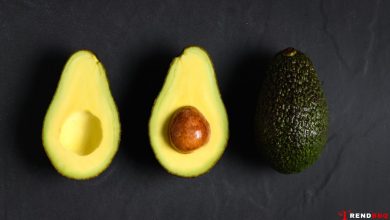
Having white and bright teeth can boost your confidence and make you smile more. However, not everyone can afford or access professional teeth whitening services. Fortunately, there are some natural and effective methods that you can try at home to whiten your teeth without spending a fortune or harming your enamel.
In this article, Trendbbq will show you how to whiten teeth at home using some common ingredients and products that you may already have in your kitchen or bathroom. We will also give you some tips on how to prevent stains and maintain your oral hygiene.
Table of Contents,
1. How to Whiten Teeth at Home with Baking Soda
Baking soda, a household staple, holds the potential to breathe new life into your smile without breaking the bank. Its gentle abrasive properties work wonders in dislodging surface stains and plaque, leading to a brighter teeth appearance. Notably, baking soda boasts antibacterial and alkaline attributes that come together to maintain a balanced mouth pH, thus thwarting bad breath.
Embark on this journey to whiter teeth by following a few simple steps:
- Blend baking soda and water: Create a mixture by combining a teaspoon of baking soda with two teaspoons of water. If you’re looking for an added whitening boost, consider infusing a few drops of lemon juice or hydrogen peroxide. Be cautious with the latter, as excessive use might lead to enamel damage.
- Apply the paste: Coat your toothbrush with the baking soda paste and gently brush your teeth for approximately two minutes. Ensure thorough coverage across all tooth surfaces while being mindful to avoid brushing your gums, as they might become irritated by the baking soda.
- Rinse with water: After brushing, rinse your mouth meticulously with water, eliminating any residue from the paste. If you wish to go the extra mile in protecting your enamel and curbing cavities, consider employing a fluoride mouthwash.
- A gradual approach: Incorporate this method into your oral care regimen once or twice weekly for gradual teeth whitening. It’s important not to overdo it, as excessive use could lead to sensitivity or enamel erosion.
2. How to Whiten Teeth at Home with Oil Pulling
Oil pulling, an ancient practice rooted in Ayurveda, extends a helping hand in your pursuit of a cleaner, whiter smile. The essence of this technique lies in swishing edible oil within your mouth for a few minutes, aiming to expel toxins, bacteria, and plaque from your gums and teeth. Additionally, oil pulling tackles inflammation and prevents the formation of stains, contributing to a brighter grin.
Here’s a personalized guide on how to embrace oil pulling for teeth whitening:
- Select your oil: The world of edible oils is your oyster for oil pulling – coconut oil, sesame oil, sunflower oil, and olive oil are all viable options. Coconut oil, revered for its antimicrobial and anti-inflammatory qualities, often takes the spotlight due to its potential oral health benefits.
- Engage in swishing: Begin by placing a tablespoon of your chosen oil in your mouth. Swirl it around for about 15 to 20 minutes, maneuvering it through the crevices of your teeth and gums. Refrain from swallowing the oil, as it could contain bacteria and toxins that warrant expulsion.
- Bid farewell to the oil: Upon completing the swishing process, elegantly spit the oil into a suitable receptacle – a trash can or sink is ideal. Prevent any potential plumbing mishaps by avoiding disposal in toilets or drains. To finalize this ritual, give your mouth a thorough rinse with water or a saltwater solution to eliminate any lingering traces of oil.
- Consistency is key: To unlock the natural teeth-whitening benefits of oil pulling, integrate this practice into your routine either on a daily basis or multiple times a week. Whether you opt for a morning pre-brush session or incorporate it post-evening brushing, the choice is yours.
3. How to Whiten Teeth at Home with Activated Charcoal
Activated charcoal is a fine black powder that is made from organic materials such as coconut shells, wood, or peat. It has adsorptive properties that can bind to stains, plaque, and bacteria on your teeth and remove them when you rinse.
Here are the steps that you need to follow to whiten your teeth with activated charcoal:
- Wet your toothbrush and dip it in activated charcoal: Wet your toothbrush slightly and dip it in activated charcoal powder. You can also use activated charcoal capsules or tablets that you can break open and pour on your toothbrush.
- Brush your teeth with activated charcoal: Brush your teeth gently with activated charcoal for two minutes. Be careful not to inhale the powder or get it on your clothes as it may stain them.
- Rinse your mouth with water: After brushing your teeth, rinse your mouth thoroughly with water until the water runs clear. You can also use a fluoride mouthwash to protect your enamel and prevent cavities.
- Repeat once or twice a week: You can use this method once or twice a week to whiten your teeth effectively. Do not use it more often as it may cause sensitivity or abrasion of your enamel.
4. How to Prevent Stains and Maintain Your Oral Hygiene
In your journey to achieve a brighter smile from the comfort of your home, adopting effective methods for teeth whitening is just one aspect. It’s equally essential to incorporate preventive measures that safeguard against stains while upholding excellent oral hygiene. Here’s a blend of practical tips tailored to your oral care:
- Consistent Brushing Routine: Forge a habit of brushing your teeth twice daily, employing a soft-bristled toothbrush paired with a fluoride toothpaste. This diligent routine effectively eradicates plaque, bacteria, and residual food particles, contributing to a fresher mouth feel.
- Embrace Flossing: Elevate your oral care by embracing daily flossing. This ritual targets the nooks and crannies between your teeth, removing debris that brushing might miss, fostering comprehensive hygiene.
- Mindful Consumption: Tread cautiously with foods and drinks known to stain teeth. Beverages like coffee, tea, wine, and soda, as well as staining foods like berries, tomato sauce, and curry, can leave undesirable marks. If indulgence beckons, consider rinsing your mouth with water or brushing soon after consumption to minimize potential staining.
- Reevaluate Tobacco Habits: Should smoking or tobacco chewing be part of your routine, recognize their adverse effects on your teeth and gums. These habits can lead to discolored teeth, gum damage, and elevated oral cancer risks. Ponder quitting or explore professional guidance on your journey toward cessation.
- Regular Dental Visits: Cultivate a proactive approach to oral health by scheduling biannual visits to your dentist. During these appointments, your dentist can expertly remove tartar or calculus accumulation, a common source of stains. These encounters also provide opportunities for personalized whitening recommendations and comprehensive monitoring of your dental well-being.
Whitening your teeth at home can be easy and affordable if you use some natural and effective methods that you can find in your kitchen or bathroom. By following these steps and tips, you can learn how to whiten teeth at home with baking soda, oil pulling, or activated charcoal. You can also prevent stains and maintain your oral hygiene by brushing your teeth regularly, avoiding staining foods and drinks, quitting smoking or chewing tobacco, and visiting your dentist regularly.
5. FAQs
What are some effective methods to whiten teeth at home?
Some effective methods to whiten teeth at home include using whitening toothpaste, hydrogen peroxide, baking soda, oil pulling, activated charcoal, and over-the-counter whitening strips.
Is using baking soda safe for whitening teeth?
Baking soda can be used occasionally to help remove surface stains, but excessive use may damage tooth enamel. It’s best to consult with a dentist before using it as a whitening method.
How does hydrogen peroxide whiten teeth, and is it safe?
Hydrogen peroxide is a bleaching agent that can help lighten tooth color. Using a diluted hydrogen peroxide solution as a mouthwash or applying it to a toothbrush can help whiten teeth. However, excessive use may cause sensitivity or gum irritation.
Can oil pulling help whiten teeth?
Oil pulling involves swishing oil (such as coconut oil) in your mouth for several minutes. While it might have some benefits for oral health, there’s limited evidence to support its effectiveness as a teeth whitening method.



